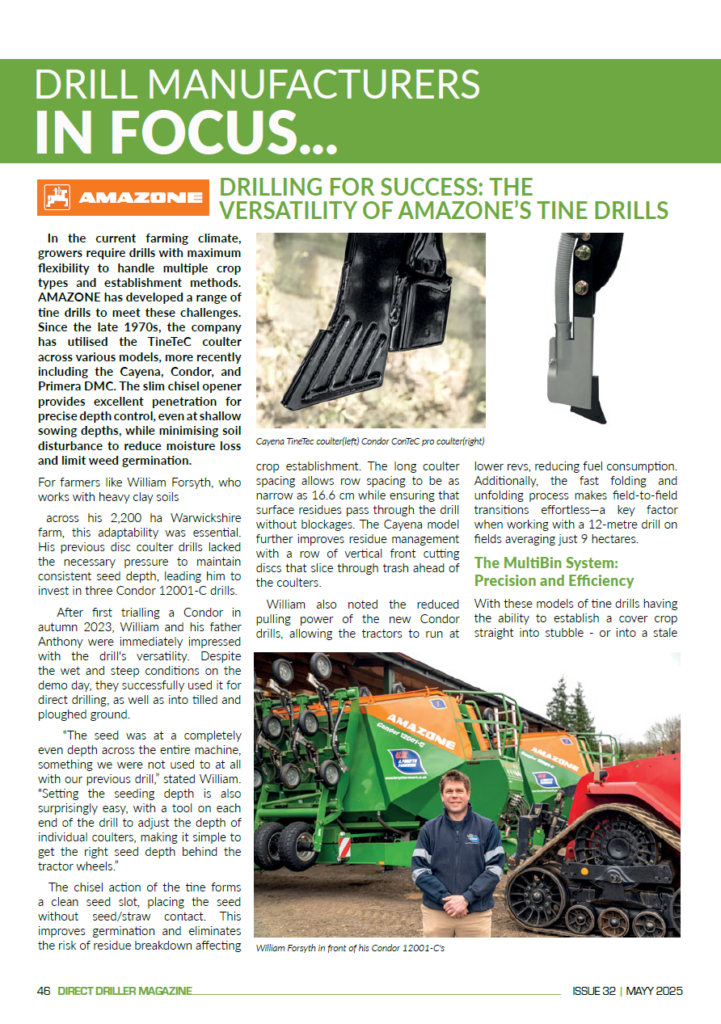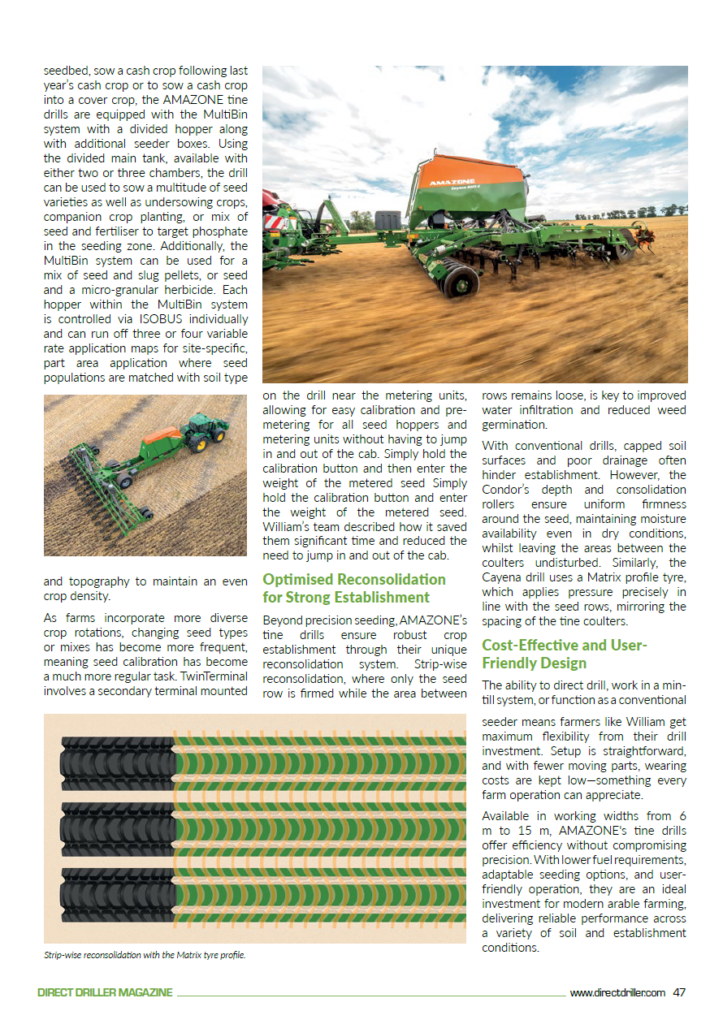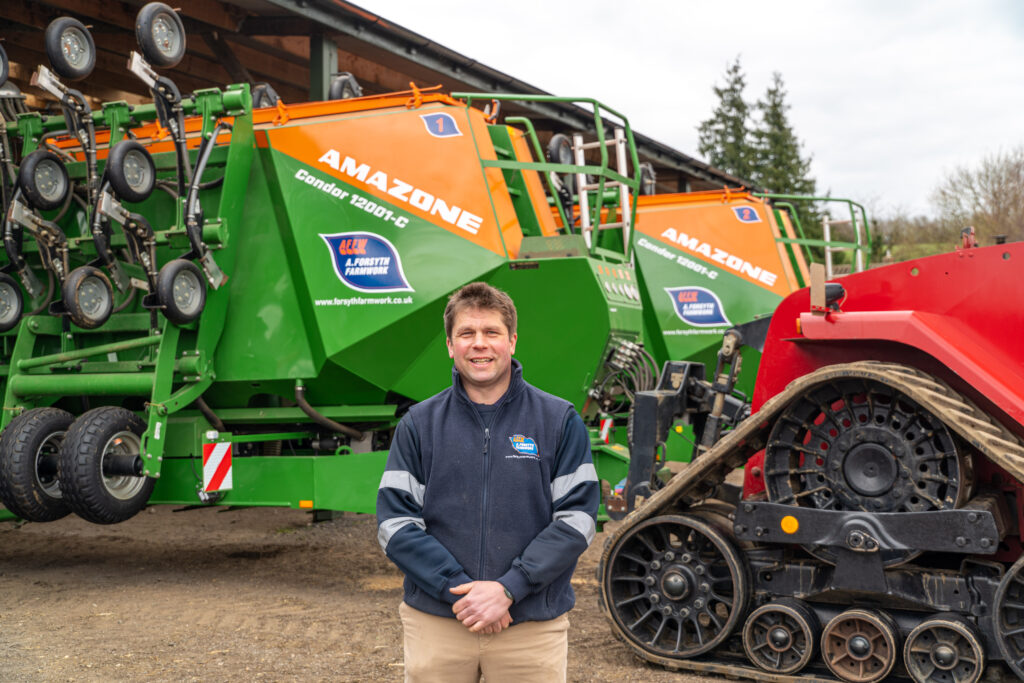In the current farming climate, growers require drills with maximum flexibility to handle multiple crop types and establishment methods. AMAZONE has developed a range of tine drills to meet these challenges. Since the late 1970s, the company has utilised the TineTeC coulter across various models, more recently including the Cayena, Condor, and Primera DMC. The slim chisel opener provides excellent penetration for precise depth control, even at shallow sowing depths, while minimising soil disturbance to reduce moisture loss and limit weed germination.
For farmers like William Forsyth, who works with heavy clay soils
across his 2,200 ha Warwickshire farm, this adaptability was essential. His previous disc coulter drills lacked the necessary pressure to maintain consistent seed depth, leading him to invest in three Condor 12001-C drills.
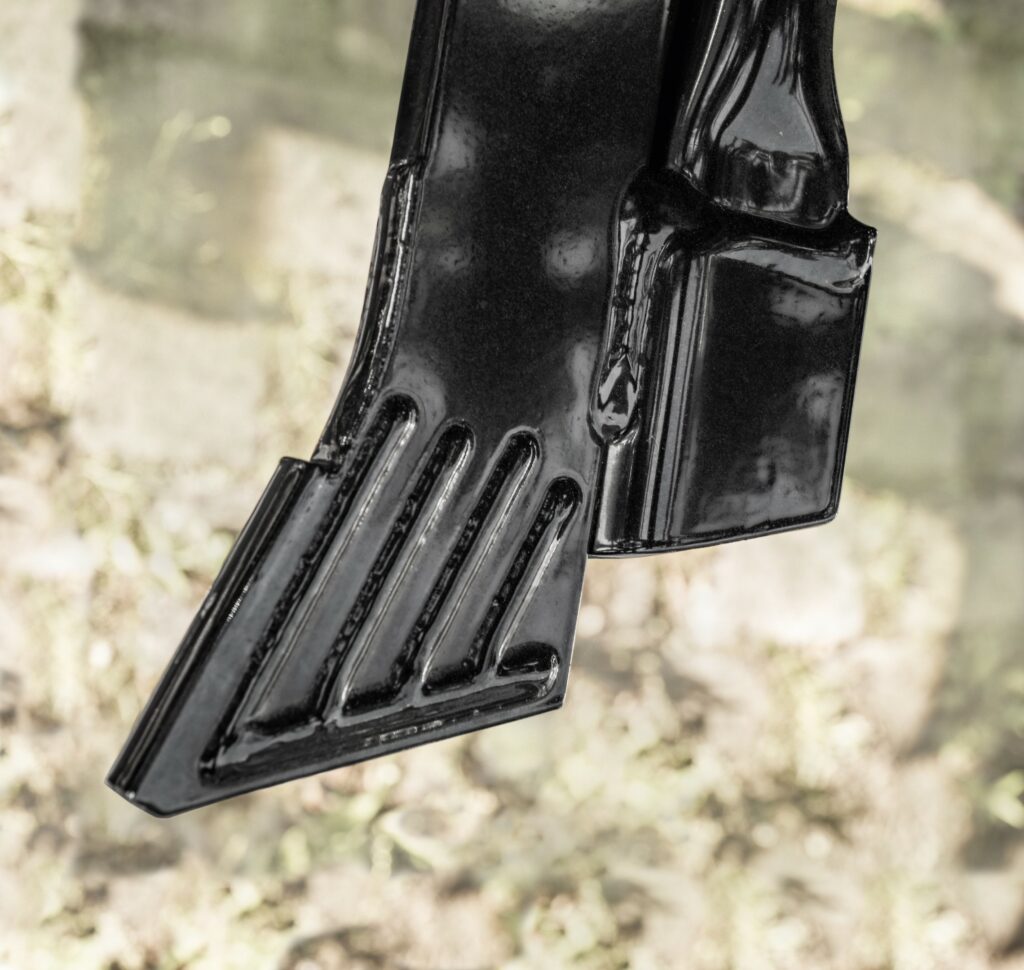
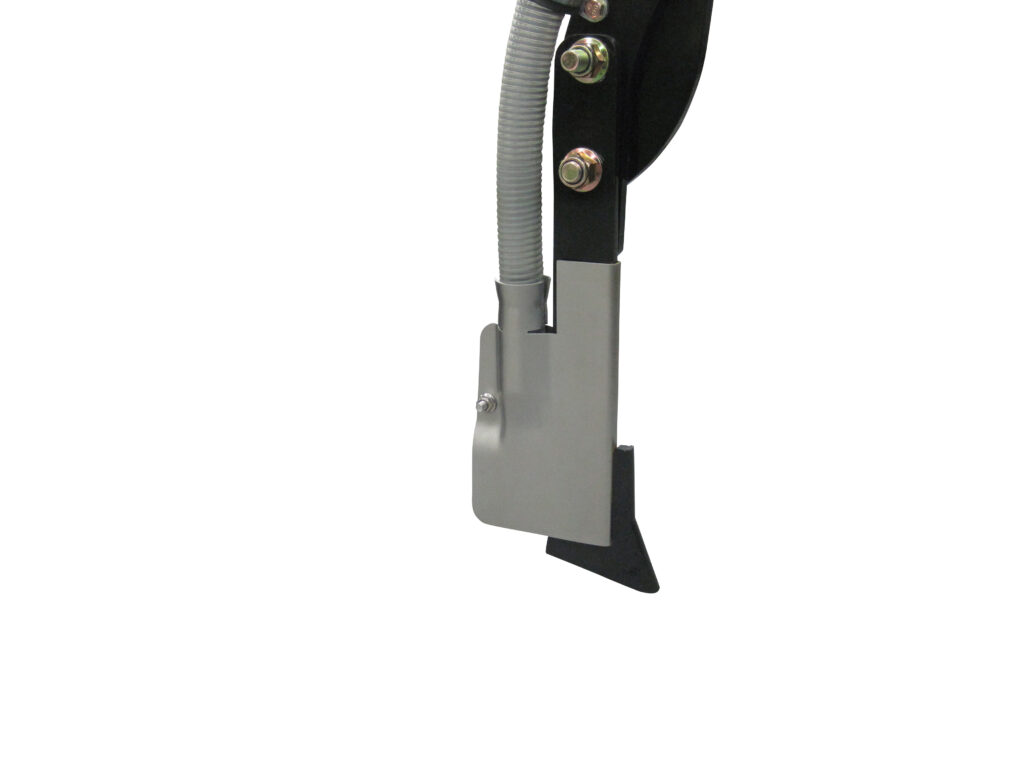
After first trialling a Condor in autumn 2023, William and his father Anthony were immediately impressed with the drill’s versatility. Despite the wet and steep conditions on the demo day, they successfully used it for direct drilling, as well as into tilled and ploughed ground.
“The seed was at a completely even depth across the entire machine, something we were not used to at all with our previous drill,” stated William. “Setting the seeding depth is also surprisingly easy, with a tool on each end of the drill to adjust the depth of individual coulters, making it simple to get the right seed depth behind the tractor wheels.”
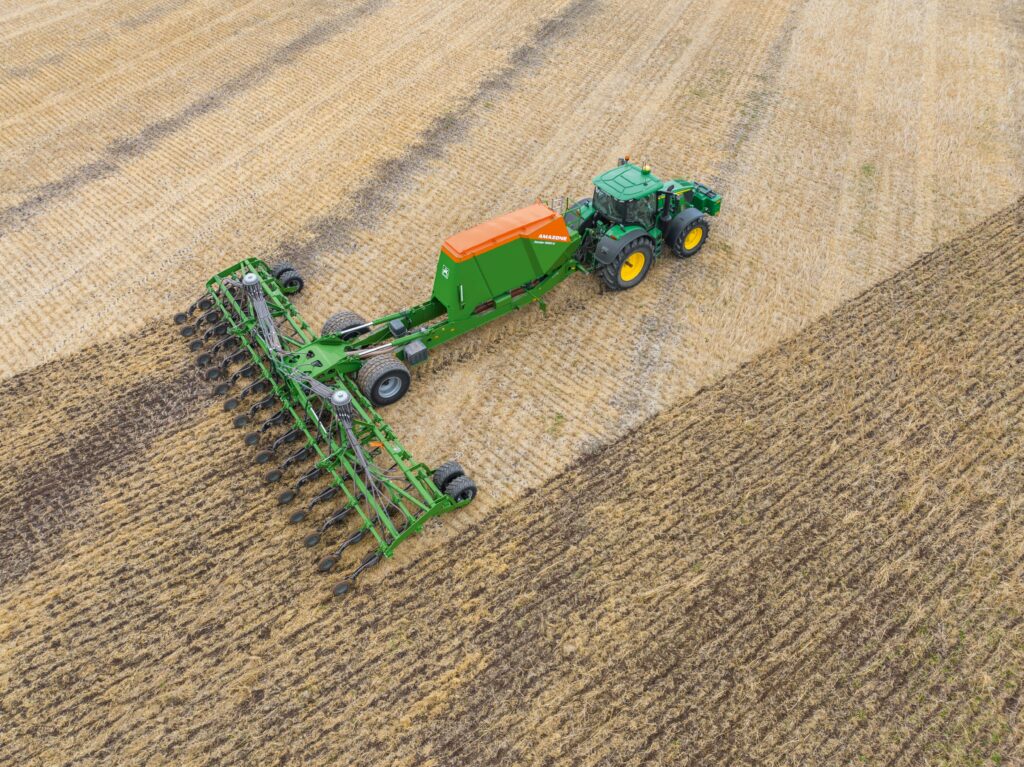
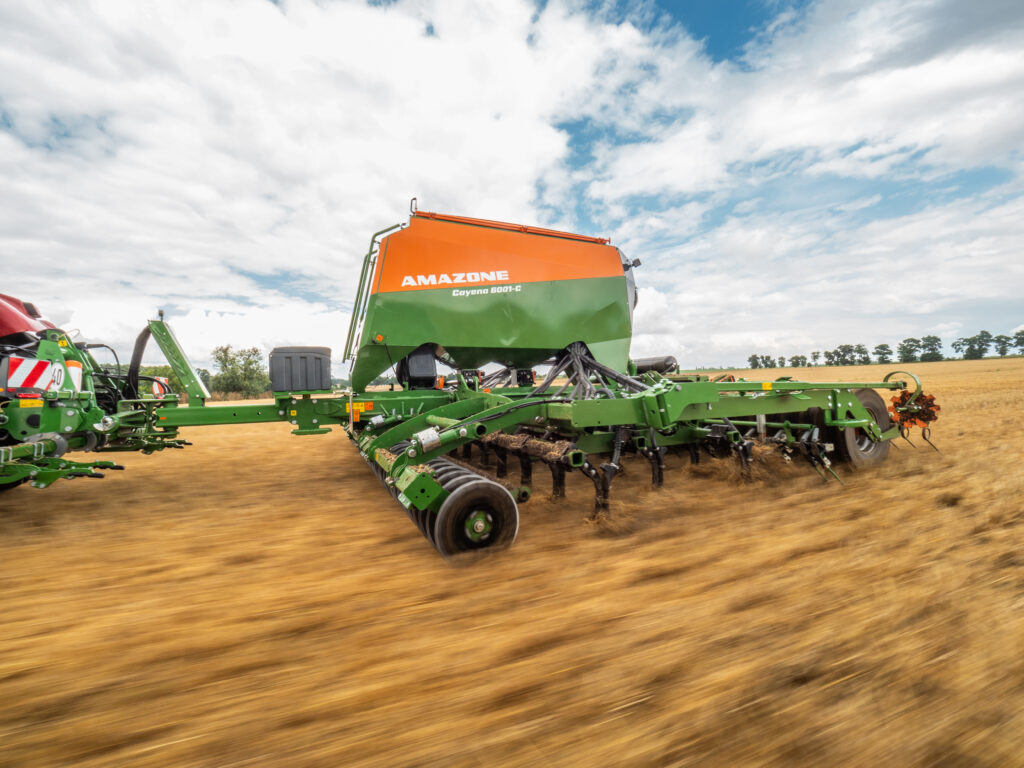
The chisel action of the tine forms a clean seed slot, placing the seed without seed/straw contact. This improves germination and eliminates the risk of residue breakdown affecting crop establishment. The long coulter spacing allows row spacing to be as narrow as 16.6 cm while ensuring that surface residues pass through the drill without blockages. The Cayena model further improves residue management with a row of vertical front cutting discs that slice through trash ahead of the coulters.
William also noted the reduced pulling power of the new Condor drills, allowing the tractors to run at lower revs, reducing fuel consumption. Additionally, the fast folding and unfolding process makes field-to-field transitions effortless—a key factor when working with a 12-metre drill on fields averaging just 9 hectares.
The MultiBin System: Precision and Efficiency
With these models of tine drills having the ability to establish a cover crop straight into stubble – or into a stale seedbed, sow a cash crop following last year’s cash crop or to sow a cash crop into a cover crop, the AMAZONE tine drills are equipped with the MultiBin system with a divided hopper along with additional seeder boxes. Using the divided main tank, available with either two or three chambers, the drill can be used to sow a multitude of seed varieties as well as undersowing crops, companion crop planting, or mix of seed and fertiliser to target phosphate in the seeding zone. Additionally, the MultiBin system can be used for a mix of seed and slug pellets, or seed and a micro-granular herbicide. Each hopper within the MultiBin system is controlled via ISOBUS individually and can run off three or four variable rate application maps for site-specific, part area application where seed populations are matched with soil type and topography to maintain an even crop density.
As farms incorporate more diverse crop rotations, changing seed types or mixes has become more frequent, meaning seed calibration has become a much more regular task. TwinTerminal involves a secondary terminal mounted on the drill near the metering units, allowing for easy calibration and pre-metering for all seed hoppers and metering units without having to jump in and out of the cab. Simply hold the calibration button and then enter the weight of the metered seed Simply hold the calibration button and enter the weight of the metered seed. William’s team described how it saved them significant time and reduced the need to jump in and out of the cab.
Optimised Reconsolidation for Strong Establishment
Beyond precision seeding, AMAZONE’s tine drills ensure robust crop establishment through their unique reconsolidation system. Strip-wise reconsolidation, where only the seed row is firmed while the area between rows remains loose, is key to improved water infiltration and reduced weed germination.
With conventional drills, capped soil surfaces and poor drainage often hinder establishment. However, the Condor’s depth and consolidation rollers ensure uniform firmness around the seed, maintaining moisture availability even in dry conditions, whilst leaving the areas between the coulters undisturbed. Similarly, the Cayena drill uses a Matrix profile tyre, which applies pressure precisely in line with the seed rows, mirroring the spacing of the tine coulters.
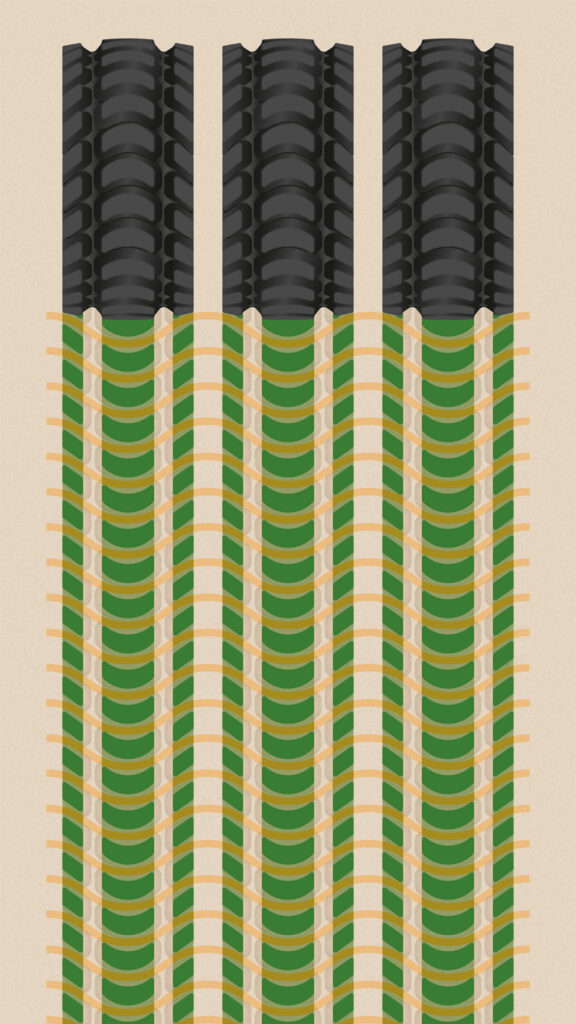
Cost-Effective and User-Friendly Design
The ability to direct drill, work in a min-till system, or function as a conventional
seeder means farmers like William get maximum flexibility from their drill investment. Setup is straightforward, and with fewer moving parts, wearing costs are kept low—something every farm operation can appreciate.
Available in working widths from 6 m to 15 m, AMAZONE’s tine drills offer efficiency without compromising precision. With lower fuel requirements, adaptable seeding options, and user-friendly operation, they are an ideal investment for modern arable farming, delivering reliable performance across a variety of soil and establishment conditions.
